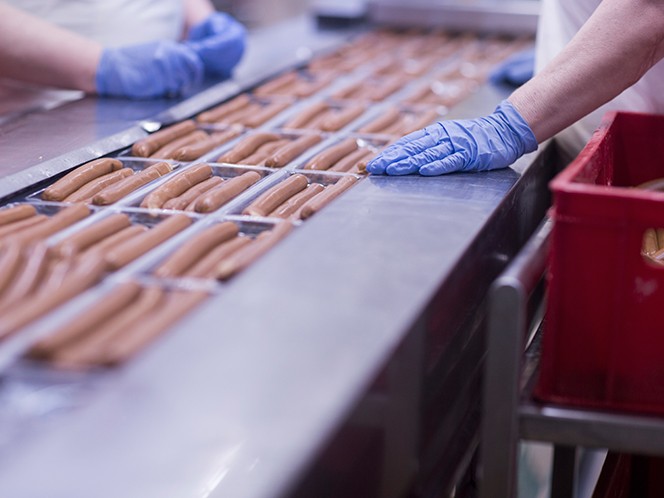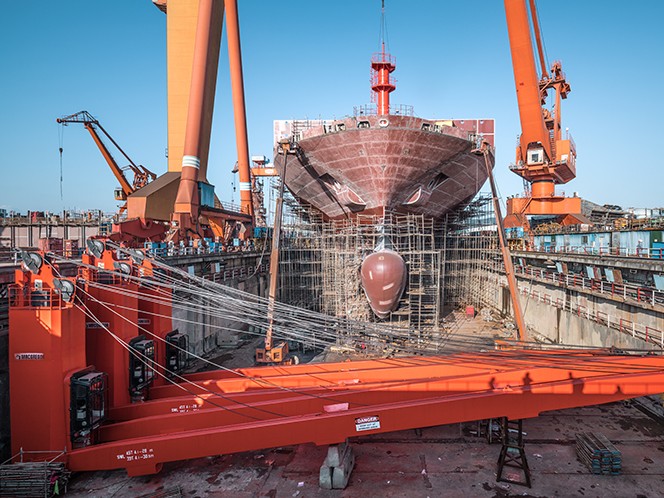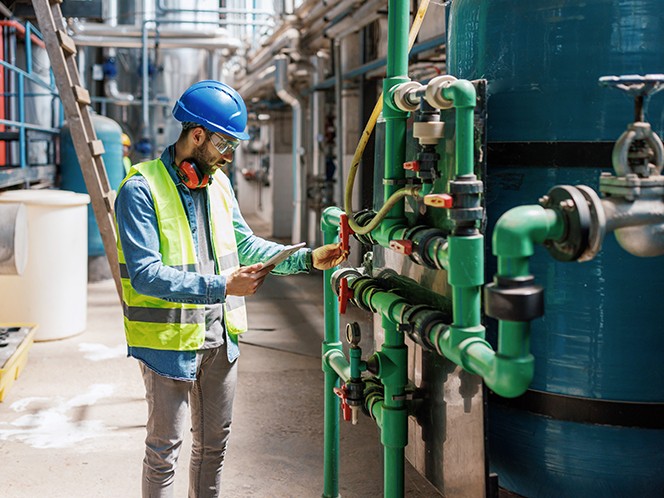Resource wise: Data-driven strategies to reduce industrial material waste
Posted: August 22, 2025
Raw materials aren’t cheap. In manufacturing, they make up about 40% of the cost of goods sold.[1] In specialty chemicals, raw materials account for 35-40% of net sales.[2] And then in construction projects, as much as 80% of the budget can go to raw materials.[3] Across industries, material costs are often the single largest expense. Financial outcomes, then, hinge on an industrial company’s success at minimizing material costs, which means minimizing material waste.
And waste is everywhere. A fault on the assembly line produces defective parts that must be scrapped; a versioning error in engineering leads to rework and wasted components in construction; inconsistent furnace heat in a chemical plant produces off-spec batches destined for discarding. Whether it’s an equipment failure, design miscommunication, or process deviation, these breakdowns translate into lost materials, into lost revenue.
On the one hand, waste comes with an environmental toll. Over the last 50 years, global material use has tripled, and it’s poised to double by 2050 unless industry leaders across sectors devise new, data-driven approaches to reduce consumption and enhance circularity.[4] On the other hand, material wastage has just as obvious a toll on profitability. And that’s actually the silver lining: in the case of material use, the environmentally responsible thing to do is also the financially responsible thing to do.
This is the second entry in our blog series Resource wise. Today, the resource in question is raw materials—how industrial companies reduce wasted materials and do more with less. Here’s how three organizations found success, with three distinct approaches, each powered by AVEVA.
Maple Leaf Foods: Driving precision with real-time, AI-enhanced production control
One of the first things we expect in a pack of hotdogs is consistency. One should look and taste identical to the next. But achieving that kind of uniformity—especially when it’s not just one pack, but 800 million hotdogs a year—requires remarkable operational precision across a multi-step process. From forming uniform logs, to cooking, slicing, and pickling, even slight deviations can affect yield and quickly result in scrapped, wasted product.

To meet that challenge, Maple Leaf Foods leveraged its exiting investment in AVEVA™ Manufacturing Execution System, which already provided process data like temperatures and cook cycles. With this contextualized data aggregated and centrally accessible, Maple Leaf can then send it to Braincube for deeper analysis using AI-powered digital twin models of the plant’s assets. Maple Leaf operators can now optimize performance in real time, using golden batch benchmarks and line-side dashboards that monitor slicing tolerances down to 0.05 mm.
Within three months, the plant saw dramatic reductions in wasted materials, which translated into greater yield, which ultimately translated into a 10-12% boost in gross profit and a meaningful step forward in the company’s broader sustainability goals.

Oceana Shipyards: Integrating teams and systems for end-to-end material control
In the shipbuilding industry, up to 70% of the cost of new builds owes to the cost of materials, which means that poor materials management can have disastrous consequences on bottom lines. To reduce rework, miscommunications between departments, and the resulting material loss, one leading Brazil-based company, Oceana Shipyard, deployed AVEVA™ Enterprise Resource Management and mastered the flow of materials across the project lifecycle.
With AVEVA Enterprise Resource Management, Oceana broke down the siloes between its engineering, procurement, warehouse, and production teams, enhancing both cross-departmental collaboration and planning efficiency. The result was greater control over material flows, fewer disruptions across the yard, and less scrap generated from miscommunication or delays. Real-time tracking of workhours and materials also allowed for better alignment between planning and execution, helping Oceana avoid costly rework.
By reducing wasted materials and improving coordination, Oceana’s integrated system does more than support sustainable operations; it enables more reliable, on-time, and on-budget project delivery. Once again, what’s good for the bottom line is also good for the environment.
IGI: Turning historical data into prescriptive insight with AI and the cloud
For over 75 years, the International Group, Inc. (IGI), has been a leader in petroleum-based wax refining and wax blending. To improve its yield, IGI knew where to look: each production cycle, the company was losing 8-10% of its wax. The question was, where? To find the solution hidden in its data, IGI harnessed the power of AI.

IGI had already deployed the AVEVA™ PI System™ across its plants, giving the company a solid foundation of real-time operational data. By integrating that data into CONNECT, IGI created a centralized, cloud-based environment where information could be analyzed at scale. With support from AI partner Lityx, the company applied machine learning algorithms to both real-time and historical data to uncover patterns, identify optimal operating conditions, and generate prescriptive insights for operators.
The results were dramatic. IGI cut wax waste by more than half—from 8.5% in 2018 to around 3% in 2021—recovering thousands of pounds of sellable product and generating an additional $10M in profit in 2022. There were other benefits too; the solution cut downtime significantly and laid the foundation for digital twin capabilities and future sustainability gains.
Final takeaway: Waste reduction drives profit and sustainability
With data-driven strategies to reduce material waste, it’s important to remember: you’re not just saving on raw material costs. When you cut scrap in your F&B plant, you’re also conserving the water used to process, clean, and sanitize. When you prevent off-spec batches in your chemical plant, you’re saving the energy it took to heat, refine, and reprocess them. And when you reduce rework on your construction site, you’re not just conserving materials; you’re reclaiming the workhours, coordination effort, and momentum lost to inefficiency.
When we step even farther back in the supply chain, we see those savings compound. Whether the raw material in question is mined, grown, synthesized, or processed, its journey to the plant or project site comes with a long chain of resource consumption: energy to extract and refine it, fuel to transport it, water to process it, and emissions at every step. When you save in materials, those savings aren’t just going to your bottom line and toward your sustainability goals; those savings also belong to our shared future.
[1] ProjectionHub. (2023, March 27). 10 manufacturing industry financial statistics. https://www.projectionhub.com/post/10-manufacturing-industry-financial-statistics
[2] von Leopold, B., & Förste, S. (2020). Raw material excellence in the chemical industry – A game changer turning cost into value. Journal of Business Chemistry. https://www.businesschemistry.org/article/raw-material-excellence-in-the-chemical-industry-a-game-changer-turning-cost-into-value/
[3] e‑a‑a. (n.d.). What percentage of a construction project is materials? Retrieved July 21, 2025, from https://www.e-a-a.com/what-percentage-of-a-construction-project-is-materials/
[4] World Economic Forum. (2022, December 14). Helping the circular economy become a reality. https://www.weforum.org/impact/helping-the-circular-economy-become-a-reality/
Related blog posts
Stay in the know: Keep up to date on the latest happenings around the industry.